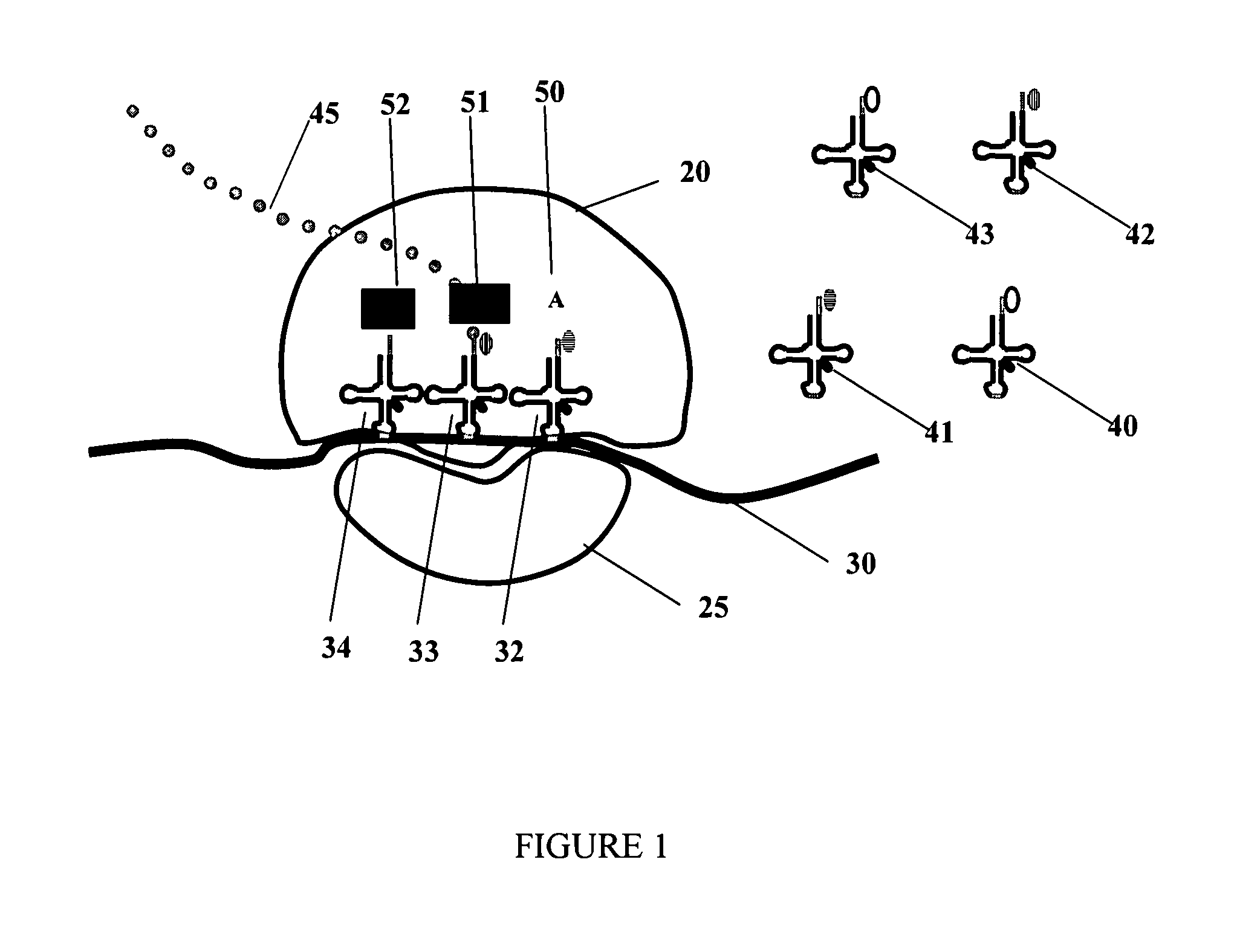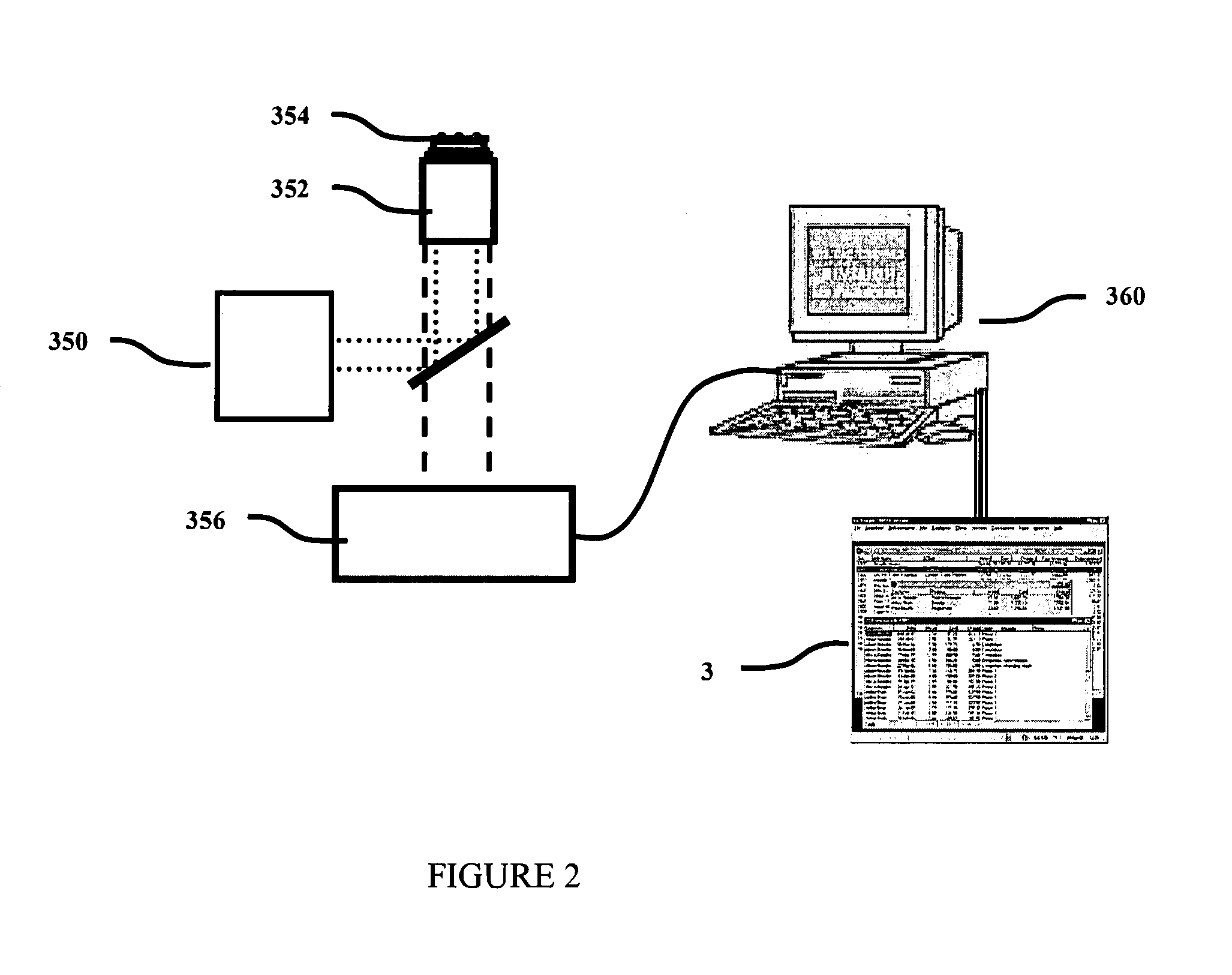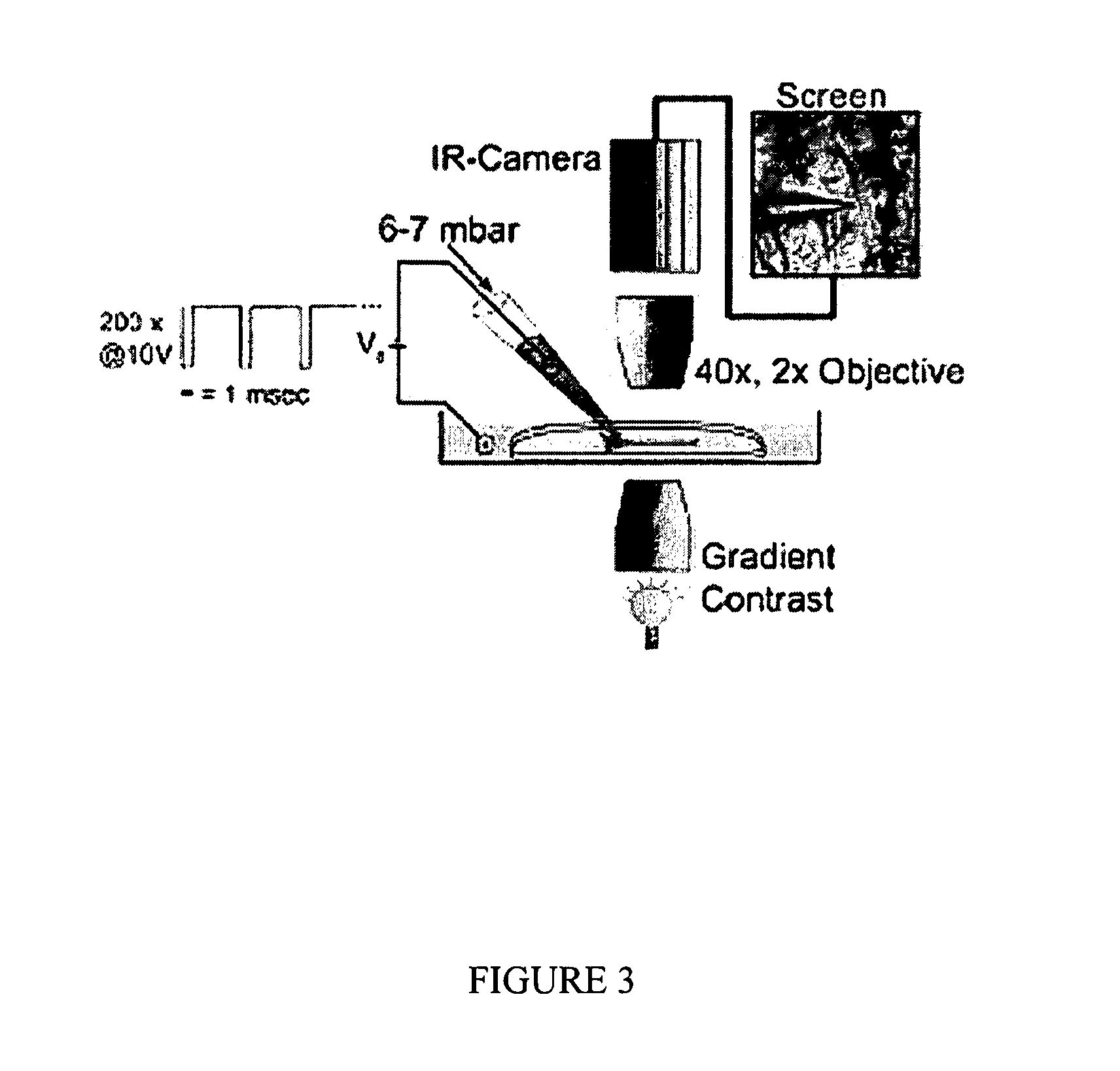Systems and methods for measuring translation of target proteins in cells
a technology of target protein and cell, applied in the field of systems and methods for measuring the rate of translation of a target protein in cells, can solve the problems of not being suitable for living cells analysis, not able to provide real-time or dynamic measurements of translation activity, and not correlated well with actual synthesis of protein
- Summary
- Abstract
- Description
- Claims
- Application Information
AI Technical Summary
Benefits of technology
Problems solved by technology
Method used
Image
Examples
example 1
Labeling Two Parts of the Translational Machinery as a Fret Pair
[0399]Two different tRNA molecules are labeled as a FRET pair. For example, some tRNAs (FIG. 1) can be labeled with a donor fluorophore, and others with a corresponding acceptor fluorophore such as Cy3 (excitation and emission peaks are 550 and 570 nm, respectively) and Cy5 (excitation and emission peaks are 650 and 670 nm, respectively); when translation is active, such tRNAs are immobilized in two adjacent sites (A and P or P and E) of the ribosome, thereby producing a FRET pair which produces measurable FRET signals. These signals indicate that the A and P sites are populated with labeled tRNAs. A small signal indicates that a low percentage of the A and P sites are populated, and therefore that the translation apparatus is in a state of low production rates. Additional exemplary, non-limiting FRET combinations are listed in Table 3.
[0400]
TABLE 3Exemplary FRET combinations.Donor fluorophoreAcceptor fluorophoreCy3Cy5R...
example 2
Introduction of the Labeled tRNAs into CHO Cells
[0405]Labeled tRNAs are transfected into CHO cells using TransMessenger transfection reagent (Qiagen, Hilden, Germany) according to the manufacturer's protocol. Transfected cells are placed under a microscope equipped for single molecule detection (Zeiss, Oberkochen, Germany) with an image acquisition device operable at a sufficient rate (10-100 frames per second), and computational units that can acquire and analyze the resulting images and data (FIG. 2). Translation of the tRNA of interest is measured.
[0406]For high-throughput screening, transfected cells are cultured in a 96-well plate format, compatible with automated screening. A robot administers one compound out of the library being screened into each well and translation detection is performed. A suitable sampling regime is adopted. The effect of the compound on translation activity is detected in comparison with negative control signal.
example 3
Diagnostic Applications
[0407]A selected yeast tRNA is labeled with donor fluorophore and stored. Another selected yeast tRNA is labeled with acceptor fluorophore and stored. Prior to the assay, two aliquots of donor- and acceptor-labeled tRNA are mixed. The mixture is transfected into the cells to be diagnosed, for example, by using the transfection kit RNAiFect™ (Qiagen, Hilden, Germany). The cells may be human cells, for example, human cells obtained from a tissue removed by biopsy. The transfected cells are introduced into a 96 well-plate. Signals are collected from the plates using a fluorescent plate reader and are subjected to computerized analysis / es. Typically, the parameters derived for the analysis are: average signal strength, average signal deviation, or percentage of labeled tRNA of a given species in each well. These parameters are monitored over time and in response to treatment. Values before and / or after treatment are compared to known standards to infer clinical pa...
PUM
| Property | Measurement | Unit |
|---|---|---|
| pressure | aaaaa | aaaaa |
| wavelengths | aaaaa | aaaaa |
| wavelengths | aaaaa | aaaaa |
Abstract
Description
Claims
Application Information
 Login to View More
Login to View More - R&D
- Intellectual Property
- Life Sciences
- Materials
- Tech Scout
- Unparalleled Data Quality
- Higher Quality Content
- 60% Fewer Hallucinations
Browse by: Latest US Patents, China's latest patents, Technical Efficacy Thesaurus, Application Domain, Technology Topic, Popular Technical Reports.
© 2025 PatSnap. All rights reserved.Legal|Privacy policy|Modern Slavery Act Transparency Statement|Sitemap|About US| Contact US: help@patsnap.com



